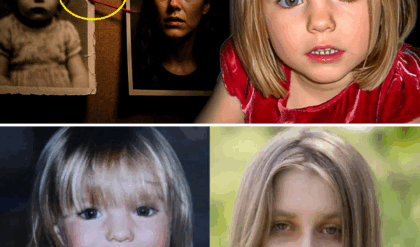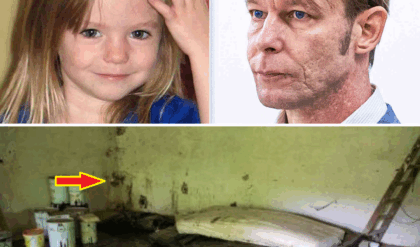The disappearance of Madeleine McCann on May 3, 2007, from a holiday apartment in Praia da Luz, Portugal, remains one of the most enduring mysteries of our time. The three-year-old vanished while her parents, Kate and Gerry McCann, dined nearby, sparking a global search and an abduction narrative that has dominated headlines for nearly 18 years. Yet, certain bizarre facts about the case raise unsettling questions about whether the McCanns have told the full story. From suspicious forensic findings to contradictory behaviors, these peculiarities cast doubt on the official account. Here, we explore five strange details that make you wonder if Kate and Gerry McCann concealed critical truths about what happened to their daughter.
1. Cadaver Dogs Alerted to the McCanns’ Apartment and Possessions
In July 2007, British sniffer dogs Eddie and Keela, trained to detect cadaver odor and blood, were deployed in Praia da Luz. Disturbingly, they alerted to multiple locations tied to the McCanns: behind a sofa in their apartment, in a wardrobe, on Kate’s clothing, and in the boot of their rental car, a Renault Scenic hired 25 days after Madeleine’s disappearance. These alerts suggested the presence of a body or blood, challenging the McCanns’ claim that Madeleine was abducted alive.
The dogs’ handler, Martin Grime, vouched for their reliability, citing their success in numerous cases. Portuguese police viewed the alerts as significant, contributing to Kate and Gerry being named “arguidos” (suspects) in September 2007. The McCanns dismissed the findings, with Kate suggesting her clothing carried odors from her work as a locum GP. No DNA corroborated the alerts, and the arguido status was lifted in 2008. However, the specificity of the dogs’ signals, especially in the rental car, raises a haunting question: why would death-related scents be linked to the McCanns’ possessions if their daughter was taken alive?
2. Contradictory Timelines from the McCanns and Their Friends
The McCanns and their seven dining companions, known as the “Tapas 7,” claimed to check on their children every 15 to 30 minutes during dinner on May 3, 2007. However, their statements to Portuguese police contain glaring inconsistencies that muddy the timeline. Gerry McCann said he checked on Madeleine at 9:05 PM and saw her sleeping, but Jane Tanner reported seeing a man carrying a child at 9:15 PM, a sighting later disputed by Scotland Yard as likely an innocent father. Matthew Oldfield’s 9:30 PM check was cursory, involving listening at the door without entering the bedroom.
These discrepancies, detailed in the case files, suggest either confusion or deliberate misalignment. The McCanns and Tapas 7 refused a police-requested reconstruction in 2008, citing media exposure concerns. For parents desperate to find their child, this reluctance is baffling. Why would the McCanns and their friends provide conflicting accounts and avoid a reconstruction that could clarify the critical hours, unless they feared exposing inconsistencies?
3. The Delayed and Outdated “Find Madeleine” Photos
After Madeleine’s disappearance, the McCanns launched the “Find Madeleine” campaign, distributing posters to aid the search. Curiously, the initial photos provided to police and media were outdated, depicting Madeleine as a younger toddler, taken one to two years earlier. More recent images, including holiday photos from Praia da Luz, weren’t shared until days later, potentially hindering early efforts to identify the three-year-old.
In 2007, digital cameras were common, and the McCanns likely had current photos. The delay in providing accurate images is perplexing for parents racing against time. Some skeptics suggest the choice of older photos could imply an intent to obscure Madeleine’s appearance, though no evidence confirms this. The McCanns explained that the initial photos were readily available, but the lag remains a strange misstep. Why prioritize outdated images when every second mattered, and could this have compromised the search?
4. Kate McCann’s Refusal to Answer Police Questions
During the Portuguese investigation, Kate McCann’s behavior during questioning raised eyebrows. In September 2007, after being named an arguido, she was asked 48 questions by police to clarify inconsistencies. Astonishingly, Kate refused to answer any, exercising her legal right to remain silent but offering no explanation. Gerry McCann answered questions in his interview, making Kate’s silence stand out. Her refusal came when police were probing the cadaver dog alerts and timeline discrepancies.
Kate later stated she was advised by lawyers to stay silent to avoid misinterpretation, and the McCanns have maintained their innocence. However, for a mother desperate to find her daughter, refusing to engage with investigators seems counterintuitive. This decision fueled speculation that Kate had something to hide. Why would Kate, a key witness, choose silence over cooperation, and what might her answers have revealed about the McCanns’ version of events?
5. The Unprecedented Political and PR Support
The McCanns’ case attracted an extraordinary level of political and media support. Within days, then-Prime Minister Tony Blair and Home Secretary Gordon Brown engaged with the McCanns, ensuring high-level attention. The UK government assigned Clarence Mitchell, a PR expert, to manage their media strategy, crafting an abduction narrative that dominated headlines. The McCanns met Pope Benedict XVI, secured endorsements from celebrities, and saw Operation Grange, launched in 2011, funded to £20 million, despite no arrests.
This influence, backed by six UK prime ministers, raises questions about why the McCanns received such resources. Critics question whether their status as doctors and connections secured preferential treatment. The McCanns’ legal battles against skeptics and the media hounding of skeptic Brenda Leyland suggest an effort to suppress alternative narratives. Why did the McCanns command such powerful backing, and could it have shielded them from scrutiny over gaps in their story?
The Madeleine McCann Case: A Fractured Narrative
On May 3, 2007, Madeleine vanished while her parents dined at the Ocean Club resort. The McCanns reported her missing at 10:00 PM, triggering a massive search. Portuguese police explored abduction, accident, and parental involvement, naming Kate and Gerry as arguidos in 2007 based on the dog alerts and inconsistencies. Their status was lifted in 2008, and the case was archived. Operation Grange has pursued abduction, focusing on Christian Brueckner, but no charges have been filed, and a June 2025 search yielded no breakthroughs.
These five facts—cadaver dog alerts, contradictory timelines, outdated photos, Kate’s silence, and political support—cast doubt on the McCanns’ account. They align with theories that Madeleine died accidentally in the apartment, possibly from a fall or sedation, and her disappearance was covered up. The McCanns insist Madeleine was abducted and may be alive. Yet, these anomalies suggest the full story remains untold.
Analyzing the Suspicious Details
The cadaver dog alerts are compelling but lack forensic corroboration. The inconsistent timelines could reflect panic, but the refusal to reconstruct the night is harder to justify. The photo delay may stem from disorganization, yet it impacted the search. Kate’s silence, while legally sound, appears uncooperative. The political and PR support raises questions about privilege. These facts don’t prove guilt but highlight inconsistencies. The McCanns’ connections may have deflected scrutiny, while investigators faced backlash for pursuing alternative theories.
Broader Implications
The McCann case exposes issues in high-profile investigations: media bias, unequal resource allocation, and suppression of dissent. The £20 million spent on Operation Grange contrasts with underfunded cases. Clarence Mitchell’s PR strategy marginalized skeptics, as seen in Leyland’s tragic death. The McCanns’ anguish, compounded by false leads, underscores the human cost. The case reflects society’s obsession with missing children, fueling debates on platforms like X, where users demand accountability. For Kate and Gerry, these questions prolong uncertainty.
What’s Next?
As Brueckner’s September 2025 release approaches, authorities analyze June 2025 search materials, seeking a breakthrough. Operation Grange faces scrutiny over its cost. The bizarre facts outlined here demand answers, whether they point to an accident, a cover-up, or an abduction. The Madeleine McCann case remains a puzzle where the McCanns’ story leaves lingering doubts about the whole truth.





